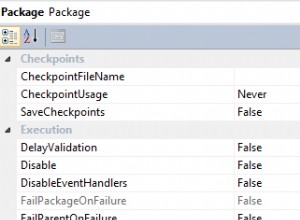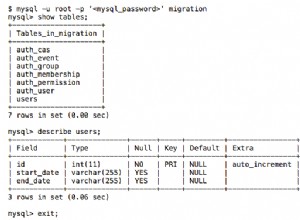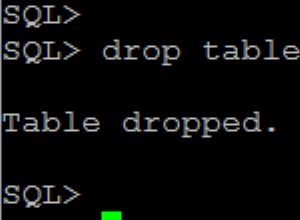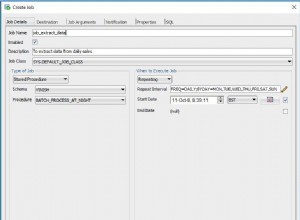Total em execução. ATUALIZAR tabela temporária vs CTE
create table Test(
OrderID int primary key,
Qty int not null
);
declare @i int = 1;
while @i <= 5000 begin
insert into Test(OrderID, Qty) values (@i * 2,rand() * 10);
set @i = @i + 1;
end;
Solução recursiva leva 9 segundos:
with T AS
(
select ROW_NUMBER() over(order by OrderID) as rn, * from test
)
,R(Rn, OrderId, Qty, RunningTotal) as
(
select Rn, OrderID, Qty, Qty
from t
where rn = 1
union all
select t.Rn, t.OrderId, t.Qty, p.RunningTotal + t.Qty
from t t
join r p on t.rn = p.rn + 1
)
select R.OrderId, R.Qty, R.RunningTotal from r
option(maxrecursion 0);
ATUALIZAR tabela leva 0 segundo:
create function TestRunningTotal()
returns @ReturnTable table(
OrderId int, Qty int, RunningTotal int
)
as begin
insert into @ReturnTable(OrderID, Qty, RunningTotal)
select OrderID, Qty, 0 from Test
order by OrderID;
declare @RunningTotal int = 0;
update @ReturnTable set
RunningTotal = @RunningTotal,
@RunningTotal = @RunningTotal + Qty;
return;
end;
Essas duas abordagens podem pelo menos fornecer uma estrutura para construir sua consulta.
BTW no SQL Server, ao contrário do MySQL, a ordem de atribuição de variáveis não importa. Este:
update @ReturnTable set
RunningTotal = @RunningTotal,
@RunningTotal = @RunningTotal + Qty;
E o seguinte:
update @ReturnTable set
@RunningTotal = @RunningTotal + Qty,
RunningTotal = @RunningTotal;
Ambos são executados da mesma maneira, ou seja, as atribuições de variáveis acontecem primeiro, independentemente da posição da atribuição de variáveis na instrução. Ambas as consultas têm a mesma saída:
OrderId Qty RunningTotal
----------- ----------- ------------
2 4 4
4 8 12
6 4 16
8 5 21
10 3 24
12 8 32
14 2 34
16 9 43
18 1 44
20 2 46
22 0 46
24 2 48
26 6 54
Na sua tabela exata, basta detectar Compra/Venda, você pode multiplicá-lo por 1 e -1 respectivamente, ou apenas assinar os campos, por exemplo, :
update @ReturnTable set
@RunningTotal = @RunningTotal +
CASE WHEN BuySell = 'Buy' THEN Qty ELSE -Qty END,
RunningTotal = @RunningTotal;
Se você atualizar para o SQL Server 2012, aqui está a implementação direta do total em execução:
select OrderID, Qty, sum(Qty) over(order by OrderID) as RunningTotal
from Test
No seu problema exato:
select OrderID, Qty,
sum(CASE WHEN BuySell = 'Buy' THEN Qty ELSE -Qty END)
over(order by OrderID) as RunningTotal
from Test;
ATUALIZAÇÃO
Se você se sentir desconfortável com atualização peculiar , você pode colocar uma cláusula de guarda para verificar se a ordem das linhas a serem atualizadas corresponde à ordem original (auxiliada por identity(1,1)):
create function TestRunningTotalGuarded()
returns @ReturnTable table(
OrderId int, Qty int,
RunningTotal int not null,
RN int identity(1,1) not null
)
as begin
insert into @ReturnTable(OrderID, Qty, RunningTotal)
select OrderID, Qty, 0 from Test
order by OrderID;
declare @RunningTotal int = 0;
declare @RN_check INT = 0;
update @ReturnTable set
@RN_check = @RN_check + 1,
@RunningTotal =
(case when RN = @RN_check then @RunningTotal + Qty else 1/0 end),
RunningTotal = @RunningTotal;
return;
end;
Se UPDATE realmente atualizar as linhas em ordem imprevisível (ou por acaso o fará), o @RN_Check não será mais igual a RN (ordem de identidade), o código gerará um erro de divisão por zero então. Usando a cláusula de guarda, a ordem de atualização imprevisível falhará rapidamente ; se isso acontecer, será a hora de registrar um
A proteção da cláusula de guarda na operação inerentemente imperativa (atribuição de variável) é realmente sequencial.




